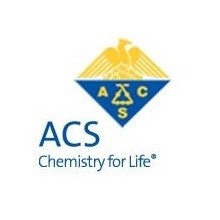
دانلود مقاله پرینت سه بعدی هیدروژل دو شبکه ای با مقاومت فشاری
ABSTRACT
This article demonstrates a two-step method to 3D print double network hydrogels at room temperature with a low-cost ($300) 3D printer. A first network precursor solution was made 3D printable via extrusion from a nozzle by adding a layered silicate to make it shear-thinning. After printing and UVcuring, objects were soaked in a second network precursor solution and UV-cured again to create interpenetrating networks of poly(2-acrylamido-2-methylpropanesulfonate) and polyacrylamide. By varying the ratio of polyacrylamide to cross-linker, the trade-off between stiffness and maximum elongation of the gel can be tuned to yield a compression strength and elastic modulus of 61.9 and 0.44 MPa, respectively, values that are greater than those reported for bovine cartilage. The maximum compressive (93.5 MPa) and tensile (1.4 MPa) strengths of the gel are twice that of previous 3D printed gels, and the gel does not deform after it is soaked in water. By 3D printing a synthetic meniscus from an X-ray computed tomography image of an anatomical model, we demonstrate the potential to customize hydrogel implants based on 3D images of a patient’s anatomy.
INTRODUCTION
The meniscus, a network of tightly woven collagen fibers, serves as a shock absorber for the knee. A meniscal tear is among the most common knee injuries with more than 500,000 reported in the United States annually. Serious tears in the meniscus often do not heal and require surgery to repair. For the most severe tears, the entire meniscus is removed in a process known as a meniscectomy. Between 2005 and 2011, 387,000 meniscectomies were performed in the United States. If a patient who has previously lost a meniscus does begin to develop pain from early degeneration in the same knee compartment, he or she may be a candidate for meniscal replacement surgery. Currently, the only FDA approved synthetic meniscus replacement product is NUSurface. Though it provides mechanical support, its nonporous structure does not stimulate tissue regeneration, which could lead to failure over time due to wear, fatigue, or an adverse body response. Two other meniscal replacement solutions that have undergone clinical trials, CMI and Actifit, do have the ability to stimulate tissue regeneration due to their porous nature, but this tissue is not the fibrocartilage that makes up the meniscus. In addition, CMI and Actifit do not have the strength to serve as a total meniscus replacement and therefore have only been used as partial replacements in patients with some meniscus tissue remaining.
